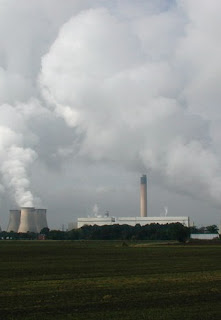The long haul
We have had a little time to reflect in the month since the Brexit
vote but regardless of the result, we still have a lot of work to do to meet
the UK’s ambitious targets to reduce carbon emissions. The referendum outcome
had barely even sunk in when, on 30th June, the government committed to the
emissions reductions recommended by the Committee on Climate Change to reduce
the UK’s carbon output by 57% relative to 1990 levels by 2030. In the light of
this, it is even more important than ever that CIBSE and its members work
collaboratively as we address the consequences of the vote to leave. It is
reassuring to see that the engineering sector reacted swiftly to the vote and
the Royal Academy of Engineering has already established a group to look at the
potential consequences for the sector, especially in the UK.
 |
| Prior success has been led by reducing emissions by generation ©Paul Glazzard |
My colleague at CIBSE Hywel Davies has written a detailed and informative summary of exactly where we currently sit from a legislative
perspective after the vote which makes for sobering reading. While the future
isn’t clear and largely hinges on the negotiations of the next few years, the
numbers are clear: The UK needs to stick to all of its current climate targets,
and set more ambitious ones to meet,
if it’s going to hit that 57% goal.
Having said that, the ‘bonfire of the subsidies’ widely
feared ahead of the vote doesn’t seem to have taken place yet (although there
have been reductions in the Renewable Heat Incentive, announced before the
vote). While the many rules and regulations that hold up these targets will
take a lot of artful work to unpick, leaving the EU won’t cause it all to
collapse around our heads. Just days after the vote, on June 30th,
the Government committed to the 57% target and at the same time produced a
report on its current progress that detailed what was being done right and what
needs to be improved.
The main hero behind the current 38% reduction in emissions
since 1990 is electricity generation, which has seen cleaner forms of energy
and efforts to de-carbonise fossil fuels pay dividends, but little progress has
been made in other areas such as heat provision and energy efficiency. This is
where our industry needs to step in. There are potential bumps in the road
ahead for our members and their businesses: a cautious foreign property
investment sector, industrial relations might yet be spooked by trade
negotiations, and big property funds may take a protectionist stance. However,
we cannot let these worries affect our commitment to driving sustainability.
It’s tempting in uncertain times like these to hold back on
collaboration, wait to see what the market does and keep a suspicious eye on
our competitors – but this is actually the time when we need to work together
the most. We need to know what the industry is worried about, where it sees
opportunities and what it wants a post-Brexit British sustainability sector to
look like. If we can get these views across to the politicians in charge of
setting the agenda, we have the chance to set targets and policies in this
country that are even more ambitious than before. And it is clear that as we
seek to make our way in the wider world beyond the EU, our skills and knowledge
of sustainability may yet provide new trading opportunities for CIBSE engineers.
 |
| CIBSE engineers have the skills and knowledge to take advantage of new markets |
If we can get our heads together, survey the industry and
decide what we want to change and what we want to stay the same, we can
continue to drive forwards. Whilst the EU has in the past played a key role in
energy management in the built environment, setting targets and legislating to
improve energy efficiency in buildings and products, there is no reason why we
have to see Brexit as a killer blow for the UK’s hopes of reaching its climate
targets. That role is now down to businesses and organisations like our
Institution.



Comments
Post a Comment
Please note comments will be moderated before being published.